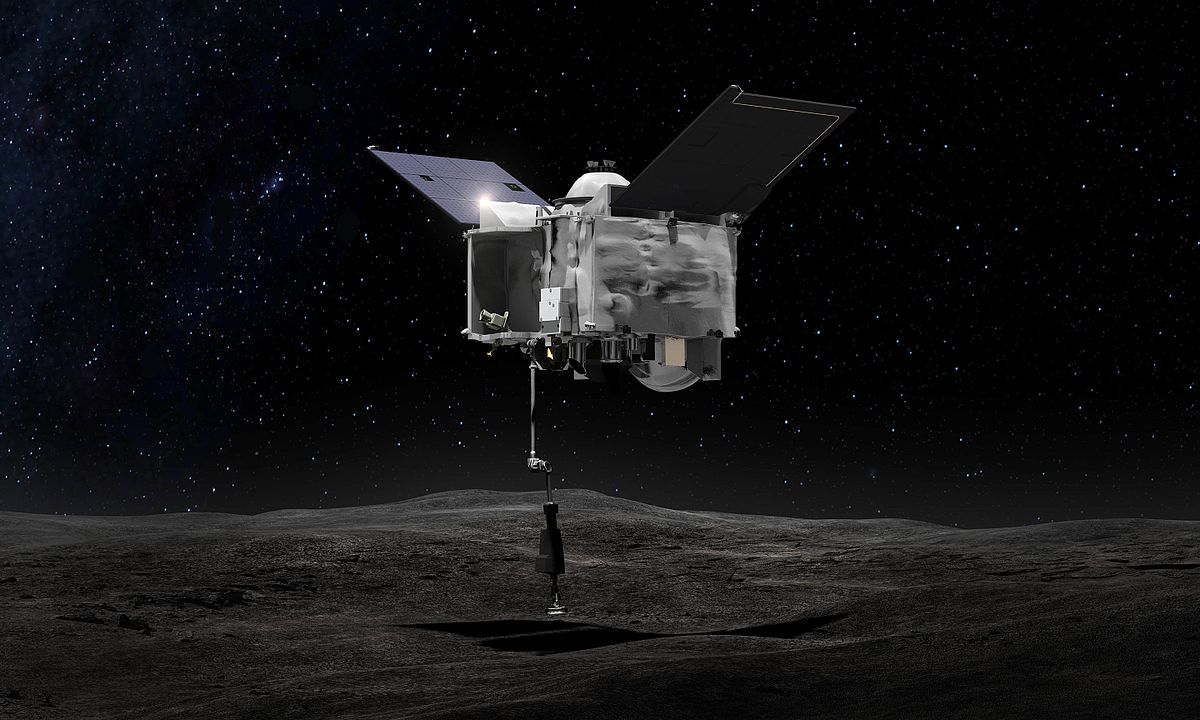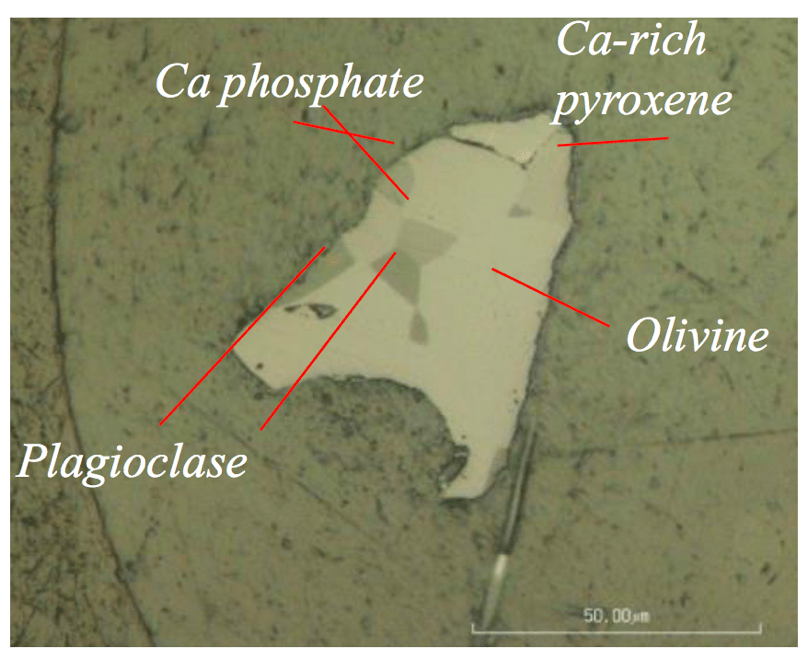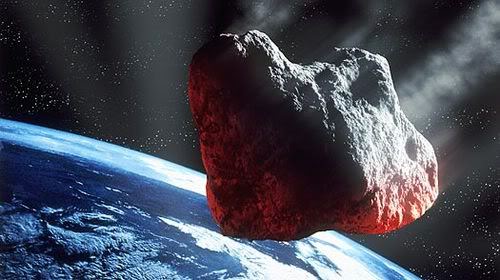So far, scientists have found around 34,000 near-Earth asteroids (NEAs) that could serve as humanity’s stepping stone to the stars. These balls of rock and ice hold valuable resources as we expand throughout the solar system, making them valuable real estate in any future space economy. But the 34,000 we know of only make up a small percentage of the total number of asteroids in our vicinity – some estimates theorize that up to 1 billion asteroids larger than a modern car exist near Earth. A project from the Trans Astronautics Corp (TransAstra), an asteroid-hunting start-up based in California, hopes to find the missing billion.
Continue reading “A Mission To Find 10 Million Near Earth Asteroids Every Year”OSIRIS-REx Returns This Sunday!

On September 8th, 2016, NASA’s OSIRIS-REx (Origins, Spectral Interpretation, Resource Identification, Security, Regolith Explorer) mission launched from Earth. Its primary mission was to rendezvous with the asteroid Bennu, a carbonaceous Near-Earth Asteroid (NEA), obtain samples from its surface, and return them to Earth for analysis. On December 3rd, 2018, the mission reached Bennu and spent the next two years searching for the optimal place to retrieve these samples. Tomorrow, on Sunday, September 24th, the mission will finally deliver these samples to Earth for analysis.
Last week, on Saturday, September 16th, the OSIRIS-REx mission was spotted by the ESA’s Optical Ground Station (OGS) 1-meter telescope on the island of Tenerife, Spain. The spacecraft was still 4.66 km million (2.9 million mi) from Earth, but well on its way to returning. This will be the last time OSIRIS-REx will be spotted by ground-based telescopes before it reaches Earth to deliver its sample and heads back out into space.
Continue reading “OSIRIS-REx Returns This Sunday!”DART Sees Asteroid Didymos for the First Time. In two Weeks, it’ll Crash Into its Moon

NASA’s Double Asteroid Redirection Test (DART) mission is on its way to rendezvous with the double-asteroid Didymos. When it arrives on September 26th, DART will collide with Dimorphos – the 160-meter (525-foot) moonlet that orbits the main body – to evaluate the kinetic impact technique for the very first time. This proposed method of planetary defense consists of a spacecraft colliding with an asteroid to alter its orbit and prevent it from colliding with Earth. In July, DART took its first image of the double-asteroid, which NASA released earlier this week!
Continue reading “DART Sees Asteroid Didymos for the First Time. In two Weeks, it’ll Crash Into its Moon”Hayabusa’s Target Itokawa Formed 4.6 Billion Years Ago, But Then it Was Smashed Up About 1.5 Billion Years Ago

Within Earth’s orbit, there are an estimated eighteen-thousands Near-Earth Asteroids (NEAs), objects whose orbit periodically takes them close to Earth. Because these asteroids sometimes make close flybys to Earth – and have collided with Earth in the past – they are naturally seen as a potential hazard. For this reason, scientists are dedicated to tracking NEAs, as well as studying their origin and evolution.
Asteroids Zipping Too Close to Earth Can Experience Seismic Activity
[/caption]
An asteroid’s orbit can be altered if it travels in the vicinity of Earth. But astronomers are finding the effects Earth has on space rocks go far beyond just orbital alterations. Richard Binzel of MIT says that Earth has considerable influence on asteroids — and from a distance much larger than previously thought. He has determined that if an near-Earth asteroid (NEA) travels within a certain range of Earth, roughly one-quarter of the distance between Earth and the moon, it can experience a “seismic shake” strong enough to bring bright, new regolith to its surface. This new finding has helped answer the question of how some asteroids appear to have fresh surfaces, as well as shedding new light on where most meteorites come from.
These rarely seen “fresh asteroids” have long interested astronomers because their spectral fingerprints, or how they reflect different wavelengths of light, match 80 percent of all meteorites that fall to Earth, according to a paper by Binzel appearing in the Jan. 21 issue of Nature. The paper suggests that Earth’s gravitational pull and tidal forces create these seismic tremors.
By hypothesizing about the cause of the fresh surfaces of some NEAs, Binzel and his colleagues have tried to solve a decades-long conundrum about why these fresh asteroids are not seen in the main asteroid belt, which is between Mars and Jupiter. They believe this is because the fresh surfaces are the result of a close encounter with Earth, which obviously wouldn’t be the case with an object in the main asteroid belt. Only those few objects that have ventured recently inside the moon’s orbital distance and have experienced a “fresh shake” match freshly fallen meteorites measured in the laboratory, Binzel said.
Binzel’s team telescopically collected information on NEAs, including a huge amount of spectral fingerprint data. Analyzing this data, the group examined where a sample of 95 NEAs had been during the past 500,000 years, tracing their orbits to see how close they’d come to Earth. They discovered that 75 NEAs in the sample had passed well inside the moon’s distance within the past 500,000 years, including all 20 fresh asteroids in the sample.
Binzel next determined that an asteroid traveling within a distance equal to 16 times the Earth’s radius (about one-quarter of the distance to the moon) appears to experience vibrations strong enough to create fresh surface material. He reached that figure based on his finding that about one-quarter of NEAs are fresh, as well as two known facts — that the space weathering process that ages regolith can happen in less than one million years, and that about one-quarter of NEAs come within 16 Earth radii in one million years.
Before now, people thought an asteroid had to come within one to two Earth radii to undergo significant physical change.
Many details about the shaking process remain unknown, including what exactly it is about Earth that shakes the asteroids, and why this happens from a distance as far away as 16 Earth radii. What is certain is that the conditions depend on complex factors such as the velocity and duration of the encounter, the asteroid’s shape and the nature of the preexisting regolith. “The exact trigger distance depends on all those seismology factors that are the totally new and interesting area for cutting edge research,” Binzel said.
Binzel also proposed a new field of study: asteroid seismology.
Further research might include computer simulations, ground observations and sending probes to look at the surfaces of asteroids. Binzel’s next steps will be to try to discover counterexamples to his findings or additional examples to support it. He may also investigate whether other planets like Venus or Mars affect asteroids that venture close to them.
Source: EurekAlert


